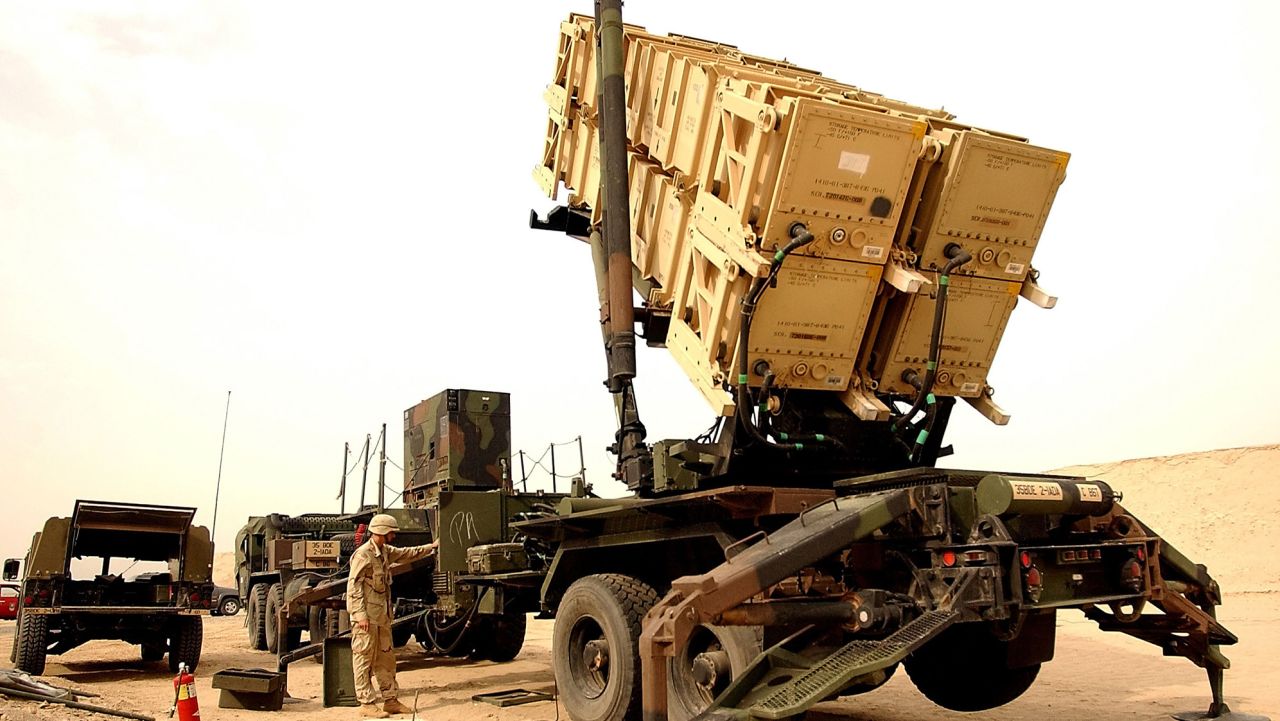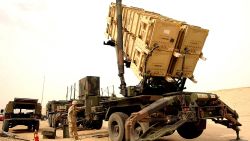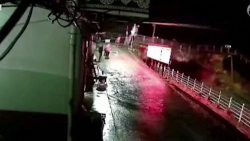The US announced this week that it is providing a Patriot missile battery to Ukraine — but experts say that while it will be a valuable addition to the beleaguered country’s air defense, it’s not a cure-all.
The US announced a new aid package to Ukraine on Tuesday, which included the “first-ever transfer to Ukraine of the Patriot Air and Missile Defense System, capable of bringing down cruise missiles, short range ballistic missiles, and aircraft at a significantly higher ceiling than previously provided air defense systems,” according to a State Department spokesperson. Ukrainian President Volodymyr Zelensky traveled to the US on Wednesday to celebrate the transfer with US President Joe Biden.
“It increases accuracy, it increases the kill rate, so it really does exactly what you want it to do which is protection on the ground on very specific targets,” retired Maj. Gen. James “Spider” Marks previously told CNN of the system’s capabilities.
The Patriot’s radar system combines “surveillance, tracking, and engagement functions in one unit,” a description from the Center for Strategic International Studies (CSIS) says, which makes it stand out among other air defense systems. The system’s engagements with incoming aerial threats are “nearly autonomous” aside from needing a “final launch decision” from the humans operating it.
Ukraine has repeatedly asked for the US Army’s Patriot – an acronym for Phased Array Tracking Radar for intercept on Target – system, as it is considered one of the most capable long-range air defense systems on the market. And though the US did not fulfill the request for the first 10 months of the war, a senior administration official told CNN that the “reality of what is going on” on the ground in Ukraine influenced their decision to do so.
In recent weeks, the Russian military has increasingly attacked Ukraine’s power grid and infrastructure as winter approached and the temperatures dropped. Zelensky told Biden that “Russian missile terror” had knocked out roughly half of Ukraine’s energy infrastructure.
Those attacks have only further fueled Ukraine’s asks for the Patriot. In fact, the Army calls the Patriot system the service’s “most advanced air defense system,” which can intercept “any aerial threat” under “any weather conditions.”
Retired Lt. Gen. Mark Hertling, former commander of US Army Europe, told CNN that there is likely some unrealistic expectations about what a Patriot battery will be able to do for Ukraine. It won’t, for example, be available to use immediately after the US agrees to provide it — it takes months to train troops on how to use the complex system, Hertling said, adding that training US troops to serve as maintainers or repairmen takes around a year. And it won’t be able to provide blanket cover for the entire country.
“These systems don’t pick up and move around the battlefield,” Hertling said. “You put them in place somewhere that defends your most strategic target, like a city, like Kyiv. If anyone thinks this is going to be a system that is spread across a 500-mile border between Ukraine and Russia, they just don’t know how the system operates.”
Indeed, Tom Karako, director of the Missile Defense Project at CSIS, told CNN that the Patriot is “not a game-changer” because it is “still only able to defend a relatively small piece of dirt.”
Not to mention the significant logistical needs; just one battery is operated by roughly 90 soldiers, and includes computers, an engagement control system, a phased array radar, power generating equipment, and “up to eight launchers,” according to the Army.
CSIS recently said in a report that the missile rounds for the Patriot come in at roughly $4 million each. Rounds that expensive likely won’t be used to shoot down every missile Russia launches toward Ukraine, Hertling said.
“This is not a system that will go after drones or smaller ballistic missiles,” he said. “Can it do that? Absolutely. But when you’re talking about knocking down a $20,000 drone, or a $100,000 ballistic missile that Russia buys, with a $3-5 million rocket, that doesn’t give you much of a return on the investment. What it can do it free up the low and medium systems to go after those kind of targets.”
The system has been purchased by other US allies, including Israel, Germany, and Japan, and was sent to Poland in an effort to help them defend themselves against Russia as it invaded Ukraine on its border. The US military made clear in March when the Patriot system was sent to Poland that it was purely for defensive purposes of NATO territory and “will in no way support any offensive operations.”
And in Ukraine’s case, Hertling says offensive operations are far more important than the Patriot system. CNN first reported last month that the US was considering a dramatic increase in the training provided to Ukrainian forces by instructing as many as 2,500 troops a month at a US base in Germany. The Pentagon said this month that combined arms training of battalion-sized elements, which will include infantry maneuvers and live fire exercises, would begin in January.
“The Patriots are a defensive, anti-ballistic and anti-aircraft weapon system, with the emphasis on defensive,” Hertling said. “You don’t win wars with defensive capabilities. You win wars with offensive capabilities.”
CNN’s Oren Liebermann contributed to this report.




















